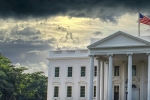Tax Insights: Updated legislation ─ Excessive interest and financing expenses limitation (EIFEL) regime (August 2023 release)
August 21, 2023
Issue 2023-24
In brief
On August 4, 2023, the Department of Finance released an updated version of the draft legislation to implement the excessive interest and financing expenses limitation (EIFEL) rules (August 2023 release). The EIFEL rules are intended to restrict Canadian taxpayers’ interest deductions based upon a percentage of their “tax‑EBITDA.” The latest version of these rules includes significant changes to their application for controlled foreign affiliates (which were first included in the updated draft legislation released on November 3, 2022 [November 2022 release]), as well as some other significant administrative changes.
The implementation date for these rules remains unchanged, with the rules applying for the first time for taxation years commencing after September 30, 2023. The final consultation period for these rules closes on September 8, 2023, providing taxpayers minimal time to comment on the most recent changes and less than two months to prepare for the effective date of these rules.
This Tax Insights summarizes the key changes to the rules between the November 2022 release and the August 2023 release.
In detail
Background
The EIFEL rules restrict the deduction for interest and financing expenses (IFE) of certain taxpayers to a percentage of their earnings before interest, taxes, depreciation and amortization (EBITDA) computed for tax purposes, which is called adjusted taxable income (ATI).
For more information, see our Tax Insights:
- “Excessive interest and financing expenses limitation (EIFEL) regime” – includes the detailed operation of the EIFEL rules based on the draft legislation that was first released on February 4, 2022
- “Updated legislation: Excessive interest and financing expenses limitation (EIFEL) regime” – details the changes announced in the November 2022 release
Exemptions from the EIFEL rules
Excluded entities
All corporations and trusts are subject to the EIFEL rules unless they meet the conditions to be considered an excluded entity.
Excluded entities are those which meet one of the following criteria:
- Canadian-controlled private corporations with taxable capital employed in Canada of less than $50 million
- groups of corporations or trusts with net group interest expenses in Canada (including net relevant foreign affiliate interest expenses) of $1 million or less
- certain groups that carry on “all or substantially all” of their business in Canada, provided certain conditions are met
In the August 2023 release, the Department of Finance has revised the third excluded entity exception to clarify two main points:
- Extending the “all or substantially all” test for entities that may not meet the threshold of carrying on business in Canada – This condition previously required that all or substantially all of the businesses, undertakings and activities of the taxpayer and eligible group entities be carried on in Canada. The August 2023 release clarifies that, in situations where entities may not be carrying on a business, the test only requires that “all or substantially all of the undertakings and activities” of such entities be carried on in Canada. Further, the explanatory notes clarify that a Canadian taxpayer, whose only activity is holding shares of a foreign affiliate, will be considered to carry on all or substantially all of its businesses, undertakings and activities in Canada.
- Foreign affiliate de minimis rule – One of the other conditions that applies to the third exception is that the Canadian taxpayer does not have foreign affiliates valued at more than $5 million – this threshold is tested against the greater of:
- the Canadian Generally Accepted Accounting Principles balance sheet value of the stock of all of the foreign affiliates
- the fair market value of all property of the foreign affiliates
The August 2023 release clarifies that this value should be determined without double-counting ownership interests that are held through tiered ownership structures.
Sector-specific exclusion – changes to the “exempt IFE” exception for certain public authority projects
The EIFEL rules apply to taxpayers in all sectors, with only a single narrow sector-specific exception for financing related to public-private partnership (P3) infrastructure projects. Certain interest and financing expenses incurred in connection with these P3 projects are excluded from the IFE definition, when they qualify as “exempt IFE.”
The August 2023 release amends the “exempt IFE” definition, which enables the “exempt IFE” conditions to be met when the public sector authority “owns or has a leasehold interest in or right to acquire” the property that is the subject of the P3 project, instead of requiring the public sector authority to own the property at the time of the interest deduction.
PwC observes
The clarification on the application of the $5 million foreign affiliate de minimis condition in the “excluded entity” exception is welcome; however, an issue appears to remain when foreign affiliates are partly owned by third parties. The explanatory notes mention that the value for the share test “is to be determined only by reference to the taxpayer’s (or taxpayer group’s) ownership interest in the affiliate.” However, for the asset test, the draft legislation still refers to the value of “all property of a foreign affiliate.” For example, a taxpayer’s group that has a 10% ownership interest in a foreign affiliate that has a total asset value of $50 million, arguably has an indirect interest of only $5 million of foreign affiliate assets. However, because this condition refers to the value of “all of the property” of the foreign affiliate, which is $50 million, this condition would not be satisfied as currently drafted. This result appears to be at odds with the share test, so clarification from the Department of Finance would be welcomed.
The changes to the “exempt IFE” definition will help entities that are involved in P3 projects when ownership of the property does not transfer to the public sector authority until a later stage of the project, or when the public sector authority only retains a leasehold interest in the property.
Financial institutions
The EIFEL rules impose certain restrictions on groups that include financial institutions (including limits on the transfer of cumulative unused excess capacity [CUEC] from financial institution group entities [FIGEs] to non‑FIGEs). This is because FIGEs are expected to generate significant interest and financing revenues in their ordinary business operations.
The definition of a FIGE is fairly restrictive, and may exclude certain parent companies of financial institution groups. The November 2022 release introduced exceptions allowing FIGEs to share capacity with “insurance holding corporations” in certain circumstances, to facilitate certain debt push‑down arrangements within financial institution groups.
The August 2023 release replaces the definition of “insurance holding corporation” with a more general concept of a “financial holding corporation.” The new definition allows holding companies for non-insurance groups to qualify, and also broadens the circumstances in which holding companies for insurance groups may satisfy this test.
PwC observes
The broadening of the “insurance holding corporation” definition to a “financial holding corporation” will allow more corporations, which are parent entities of FIGEs, to meet this definition and qualify to receive CUEC transferred from FIGEs (subject to certain limitations). This change may facilitate loss consolidation arrangements within additional financial institution groups. Groups that have financial institution and non-financial institution entities and have considered which rules apply to each entity may now need to revisit these classifications for modelling purposes. Despite this change, the EIFEL rules that apply to financial institutions remain restrictive.
Eligible group entities
The eligible group entities definition is important to the EIFEL rules for the purpose of determining which entities are:
- able to share CUEC among one another
- able to partake in the group ratio election (provided such entities are also in the same consolidated group), and
- tested as a common group for excluded entity exceptions (which are generally tested on a group-wide basis)
The August 2023 release made only minor changes to the eligible group entities definition, e.g. instead of this definition connecting a beneficiary to a non-discretionary trust, a beneficiary is now connected when it does not hold a fixed interest in the trust.
PwC observes
The change to the discretionary trust definition does not address certain concerns with the application of the excluded entity definition, which relies on the eligible group entities test (where discretionary trusts may cause certain purely domestic corporations to be subject to the EIFEL regime); if not for the link to the discretionary trust, these corporations might otherwise be excluded entities. This could also be problematic as certain relief provided under the EIFEL regime, such as transferring CUEC, is not provided to discretionary trusts.
Adjusted taxable income (ATI)
A key variable in determining the deductibility of interest and financing expenses under the EIFEL rules is ATI, which reflects a “tax-EBITDA” concept. The capacity to deduct interest is limited to 30% of ATI (40% for taxation years beginning after September 30, 2023 and before 2024), unless the group ratio election is made. ATI is based on taxable income, with certain adjustments. The August 2023 release reconsiders some of these adjustments to ATI.
Non-capital loss carryforwards utilized in the year
When a corporation or trust utilizes a non-capital loss carryforward, the taxable income used as the starting point for the ATI calculation will decrease. Because these losses can include interest expenses and other similar items that are generally added back in computing ATI, the EIFEL rules will require them to be adjusted. This could be a complex task as it will require a determination of certain components of the ATI calculation for the loss year, which could require looking back many years before EIFEL is implemented (for example, if utilizing a non-capital loss that arose up to 20 years prior).
As a result, the Department of Finance has introduced a new election to designate certain pre-regime non‑capital losses as “specified pre‑regime losses.” The impact of designating such a loss as a “specified pre‑regime loss” is to add back a fixed 25% amount in respect of that loss, when determining ATI in the year the loss is utilized. In effect, the 25% acts as a proxy for adjustments that would have been made to arrive at ATI in computing those losses.
The specified pre‑regime loss election is available for a loss year that ends before February 4, 2022 (i.e. the date that the EIFEL legislation was first released).
Other amendments to the ATI definition
Other amendments to the ATI definition include:
- a clarification that taxable income used as the starting point for ATI should be before deducting any previously restricted interest and financing expenses (RIFE) that were deducted under proposed paragraph 111(1)(a.1) of the Income Tax Act (the Act)
- an add‑back for losses that are reasonably considered to be related to activities funded by exempt IFE (similar to the deduction in variable C for income earned that relates to activities funded by exempt IFE)
- an addition to ATI for amounts in respect of certain investment tax credits and government assistance, to the extent that such amounts:
- reduced the cost or capital cost of certain properties in a prior year, and
- were not included in income (or ATI) for the year or a preceding taxation year
PwC observes
While a simplification election (the designation of certain losses as specified pre-regime losses) is helpful, it is not likely to be beneficial in all cases. In some cases, undertaking the more detailed calculation to determine the proportion of the loss that could provide an uplift adjustment to ATI may lead to a more beneficial outcome than the result of making the simplification election (i.e. in cases when more than 25% of a loss was generated from IFE in a pre‑regime loss year). Taxpayers will therefore have an additional decision to make in determining ATI; they will need to determine whether a loss utilization adjustment is significant enough to the ATI calculation to warrant the full calculation of IFE in the pre‑regime loss year (which is required if no pre‑regime loss election is made). This decision would be made annually as the specified pre-regime loss election applies only in respect of the particular year in which a non-capital loss from a prior year is being utilized.
Interest and financing expenses and revenues
The EIFEL rules deny the deduction of a proportion of each expense included in a taxpayer’s IFE; this proportion is computed by a formula in proposed subsection 18.2(2) of the Act. The key elements of this formula include the IFE and the interest and financing revenues (IFR) of the taxpayer. The August 2023 release includes only a few changes to these key definitions.
Adjustments for IFE and IFR sheltered from tax by certain deductions permitted by the Act
The August 2023 release modifies the IFR definition to ensure that IFR is reduced by certain amounts that are sheltered from Canadian Part I tax by the existing rules in the Act for claiming foreign tax credits (subsections 126(1) and 126(2)) or expensing foreign taxes (subsection 20(11) to 20(12.1)) (other than for foreign withholding taxes). A similar amendment is made to the IFE definition to ensure that the reductions to IFE in variable B (which are primarily intended to cover certain income items in respect to hedge agreements) also cannot include amounts sheltered from Part I tax by credits or deductions for foreign taxes (other than withholding taxes).
Application of the rules to controlled foreign affiliates
In the November 2022 release, the EIFEL rules were expanded to take into account the IFE and IFR of a taxpayer’s controlled foreign affiliates. As a result, a single subsection 18.2(2) limitation proportion is determined for the taxpayer, which includes the attributes of its controlled foreign affiliates, and this same proportion is then applied to the controlled foreign affiliate’s relevant affiliate interest and financing expenses (RAIFE); this gives rise to an interest denial which could increase the affiliate’s foreign accrual property income (FAPI) or decrease its foreign accrual property loss (FAPL). Although this overall general concept remains, significant relieving revisions were made in the August 2023 release.
Clarifications on the exclusion of active business interest from RAIFE
The August 2023 release makes important clarifications to confirm that RAIFE should not include an amount that is:
- deductible in computing any income or loss of the affiliate that is included in computing the affiliate’s income or loss from an active business because of paragraph 95(2)(a), or
- described in clause 95(2)(a)(ii)(D) and treated as nil for the purposes of determining an amount for A or D in the formula in the definition “foreign accrual property income” in subsection 95(1)
Further, the explanatory notes state that “only amounts that are deductible in computing income or loss that is included in determining FAPI are included in relevant affiliate interest and financing expenses.”
Exclusion of relevant inter-affiliate interest (RIAI)
New proposed subsection 18.2(19) excludes certain amounts of interest that are paid or payable between controlled foreign affiliates. Broadly, this rule is intended to remove from:
- RAIFE, those interest expenses that are deducted in computing FAPI, and
- relevant affiliate interest and financing revenue (RAIFR), the reciprocal interest income that is included in FAPI,
when both parties are controlled foreign affiliates of the taxpayer or of an eligible group entity in respect of the taxpayer.
The exclusion of RIAI is similar to the concept of excluded interest between Canadian eligible group members, but is applied automatically rather than by election. Also, instead of simply excluding the full amount of the RIAI, the amounts excluded from RAIFE and RAIFR are determined by complex formulae (which generally consider any difference between the Canadian group’s participating percentages in the two controlled foreign affiliates, and the net interest and financing revenues of the payer affiliate).
New election for expenses that generate FAPLs
New proposed clause 95(2)(f.11)(ii)(E) includes an election to enable taxpayers to determine an “elected amount,” which can be excluded from RAIFE. The “elected amount” is treated as non‑deductible in computing income or loss from property, a business other than an active business or a non‑qualifying business, which has a twofold impact – it:
- is not included in RAIFE and therefore will not impact the Canadian taxpayer’s IFE, or EIFEL limitation proportion
- reduces the affiliate’s FAPL
This election allows a taxpayer to forgo a FAPL (which may never be used) so that the affiliate’s RAIFE that would otherwise be included in the calculation of such FAPL are not included in the taxpayer’s IFE (which absent the election could have resulted in a higher proportion of non‑deductible interest to the Canadian taxpayer).
Foreign accrual tax deduction when including RAIFR in IFR
When including the taxpayer’s share of RAIFR in its own IFR, a reduction is required in respect of the foreign accrual tax deducted in respect of that RAIFR. The August 2023 release clarifies that this does not include any portion of taxes that is in respect to Canadian withholding tax paid under subsection 212(1) (Part XIII tax).
PwC observes
The clarification that interest expenses that are relevant in computing deemed active business income are not included in RAIFE is helpful for many taxpayers with controlled foreign affiliates that earn such income. This clearly demonstrates that RAIFE is intended to include only those interest expenses that are relevant in computing FAPI or FAPLs.
The new automatic exclusion of RIAI may be helpful for some taxpayers, where interest expense is relevant in computing FAPI in one controlled foreign affiliate and the interest income is included in FAPI in a different controlled foreign affiliate. However, calculating the amounts excluded under the formulas is likely to involve significant complexity, particularly if there are interest amounts owing between controlled foreign affiliates in which the taxpayer’s, or an eligible group entity’s, equity ownership differs.
The new election to ignore interest and financing expenses that generate FAPLs is a helpful addition for taxpayers that do not anticipate utilizing such FAPLs.
In many cases, Canadian taxpayers must determine through modelling whether the loss of the FAPL (and its potential future offset against FAPI arising in later years) is an appropriate cost to enhance the Canadian taxpayer’s interest deduction in the current year. The election should not be made lightly as it appears that there are no amendment provisions to reinvoke the FAPL if it is required at a later date.
Group ratio rules
If a group of corporations or trusts has an overall interest restriction, it may be possible to use the “group ratio” election to have a more beneficial ratio apply to deduct a greater proportion of interest in Canada. This election replaces the fixed ratio with a group ratio, which is equal to the “group net interest expense” (GNIE) divided by the group adjusted net book income (GANBI); these amounts are generally determined based on the accounting income of the worldwide group, with certain adjustments.
The most significant change in the August 2023 release is the introduction of a 10% uplift to the group ratio amount (i.e. this amount will now be 1.1 x GNIE / GANBI). The explanatory notes indicate that this 10% uplift is to account for book-to-tax timing differences.
Non-resident filers electing under section 216
Non-residents who receive rent on real or immovable property in Canada (or a timber royalty) can elect to pay tax under Part I (of the Act) on the payments, instead of under Part XIII. The effect of this election is to allow the non‑resident to calculate its tax, on a net income basis, as though it is a Canadian resident.
The August 2023 release amends section 216 so that non-residents electing to file a Canadian tax return under this section cannot be considered under the EIFEL rules to be an eligible group entity, an excluded entity, or a fixed interest commercial trust and cannot elect to apply the group ratio rule.
PwC observes
The exclusion of section 216 filers from these important relief mechanisms under the EIFEL rules would restrict them from benefiting from:
- sharing CUEC
- partaking in the group ratio allocation
- being exempt from the EIFEL rules altogether as an excluded entity
Separately, paragraph 216(1)(c) also prevents such taxpayers from being able to deduct previously denied RIFE under paragraph 111(1)(a.1).
Non-resident filers with significant interest and financing expenses should seriously consider whether they continue to elect to file under section 216, as they will be required to compute EIFEL under the Canadian income tax rules, without any options to benefit from the group relieving provisions of EIFEL. Alternatives that could be considered include:
- applying (and paying) Part XIII tax as a non-resident, or
- modifying the operation of the rental property so that the non-resident’s activity is considered to generate income from a business, which would then be subject to Part I tax for the non-resident without electing under section 216 (at the cost of exposure to “branch tax” on after-tax income and gains from the property)
Administrative changes
The August 2023 release will require taxpayers to file with their income tax return a prescribed form containing prescribed information with respect to the deductibility of their interest and financing expenses for each taxation year. If the prescribed form is not filed on time (or is incomplete), the taxpayer’s assessment limitation period in respect of EIFEL matters will remain open up to the day that is four years following the date the taxpayer files the completed form.
PwC observes
The prescribed form has not yet been released, so it is currently unclear what information the Canada Revenue Agency will require to be included. There is potential for this form to be complex (e.g. the EIFEL calculations include a large number of data points to determine the result of the subsection 18.2(2) limitation).
Next steps
The August 2023 release of the revised EIFEL rules has started a new consultation process, which will remain open until September 8, 2023. This gives taxpayers and advisers an opportunity (expected to be the last one) to provide comments before the rules are enacted.
PwC observes
The EIFEL rules are expected to be effective for taxation years starting after September 30, 2023, which leaves a limited amount of time for taxpayers to understand the impact of the rules on the tax‑deductibility of their interest and financing expenses and, if necessary, to restructure their financing.
Taxpayers with controlled foreign affiliates that incur interest and financing expenses relevant in computing FAPI will want to pay close attention to this latest release so that they can consider the impact of various scenarios (including election choices) on any existing modelling undertaken to date.
The limited amendments in the August 2023 release (to the parts of the rules that have already been through an earlier consultation process) demonstrate that it is unlikely that further significant amendments will be made to the rules, other than to address issues arising from new areas of this latest release. Thus, taxpayers should prepare for the rules to be enacted in a manner substantially similar to its current form.
The takeaway
The revisions made to the EIFEL rules will further complicate their application to controlled foreign affiliates; this will require modelling for those affiliates that incur interest expenses or earn interest income, which is relevant in computing FAPI or FAPLs, and may include scenario modelling and cost-benefit analysis on the future use of FAPLs.
To figure out the impact of EIFEL for your group, you must understand the interest restriction or excess capacity of each Canadian taxpayer in your group and then work through the relieving provisions to determine whether they can help alleviate an overall interest restriction for the group. The complexity of these rules cannot be underestimated and groups should seek to quantify their impact now. The introduction of a prescribed form indicates that proper EIFEL calculations will also be important for meeting tax compliance obligations.
Contact us




National Growth Priorities Markets Leader, Partner International Tax, PwC Canada
Contact us


















